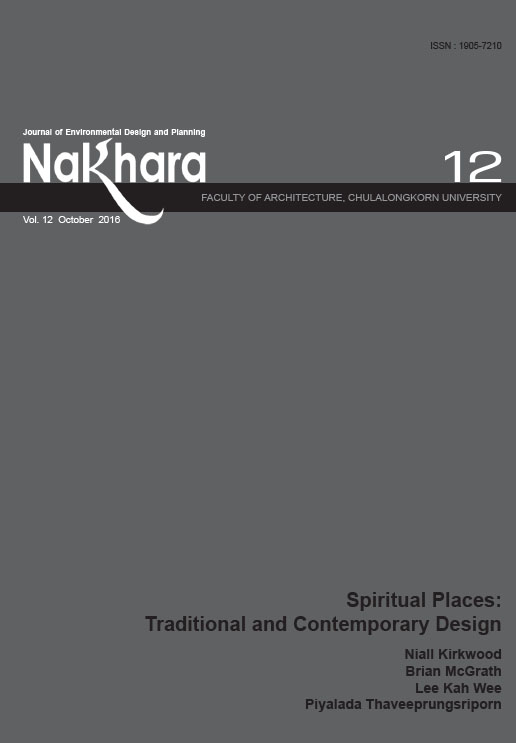Sustaining the Identity of Spiritual Mughal Monuments: Case of Sat Masjid Road Dhaka
Main Article Content
Abstract
Bangladesh, is home to the fourth largest Muslim population of the world. Numbers of mosques are proportionately dense in relation to the city’s population and the capital. The capital, Dhaka, is called
the city of mosques. Spiritual buildings are an integral part of the architectural character of Dhaka. It was
a flamboyant city during the Mughal era. The architecture of Mughal Dhaka made profound contributions
to the history of Islamic architecture. Mughal religious monuments are significant for combining spirituality
with identity. Now their identities are struggling with the growth of Urbanization. This study attempts to
analyze Mughal spiritual buildings at Sat Masjid Road in Dhaka to protect them from decay and to ensure
the restoration of redeemed spirituality.
Article Details
References
Ali, T. (2009, January 25). Mindless construction puts Mughal-era Eidgah at risk. Retrieved from The Daily Star: http://www.thedailystar.net/news-detail-72733
Awan, M. Y., & Kazmi, N. S. (2008). Present condition and causes of decay of tomb of Jahangir at Shahdara, Lahore. Pakistan Journal of Engineering and Applied Sciences, 2, 51-58.
Banglapedia. (2003). Mosque Architecture. Retrieved from the national encyclopedia of bangladesh: http://en.banglapedia.org/index.php?title=Mosque_ Architecture
Dara Begam’s Tomb Dhaka. (n.d.). Retrieved from http://khaledrentacar.com/tourism-in-bangladesh/mughal- monuments-in-dhaka/dhanmandi-group-of-monuments/dara-begams-tomb/
HAQUE, A. (2009, May). Saat Masjid, A remaining archaeological heritage of Mughals. Retrieved from http://photos.arifulhaque.com/saat-masjid-a-remaining-archaeological-heritage-of-mughals-may-2009/
Hossain, M. S. (2013). Strategies to integrate the Mughal settlements in Old Dhaka. Frontiers of Architectural Research, 2 (4), 420–434.
Islam in Bangladesh. (2016, July 18). Retrieved from Wikipedia: https://en.wikipedia.org/wiki/Islam_in_Bangladesh
Islam, H. (2014, June 15). Mughal architecture in Bangladesh. Retrieved from http://urp- bd.blogspot.de/ 2014/06/mughal-architecture-in-bangladesh.html
Khan, G. R. (2015, October 15). Hidden gems of Sat Masjid Road. Retrieved from The Independent: http://www.theindependentbd.com/home/printnews/19400
Mughal Mosques of Dhaka. Dhaka Guide Part 1. Dhaka: Tourism in Bangladesh.
Mughal Mosques of Dhaka. Dhaka Guide Part 2. Dhaka: Tourism In Bangladesh.
Shamsuzzoha, A., & Islam, H. (2011). Structure, decoration and materials: Mughal mosques of medieval Dhaka. Journal of the Bangladesh Association of Young Researchers, 1 (1), 93-107.
Siddique, A. B. (2013, August 24). Historic mosque loses originality due to ill-conceived renovations. Retrieved from DhakaTribune: http://www.dhakatribune. com/development/ 2013/aug/24/historic-mosque-loses-originality-due-ill- conceived-renovations
Sun, D. (2015, May 3). Save historic Dhanmondi Eidgah. Retrieved from Daily Sun-True and Impertial: http://www.daily-sun.com/arcprint/details/41750/Save-historic-Dhanmondi-Eidgah/2015-05-03

